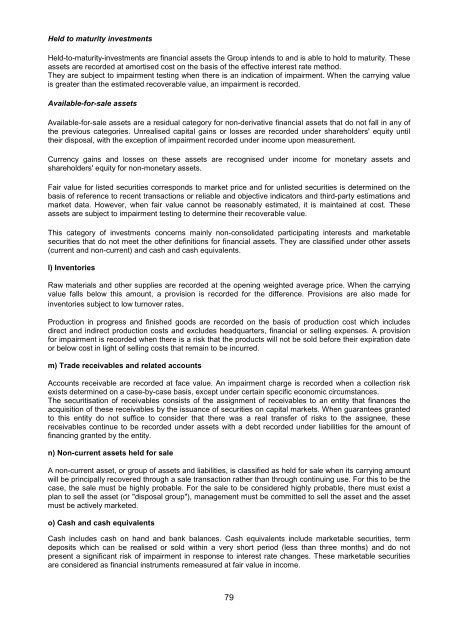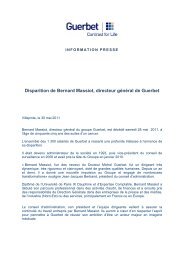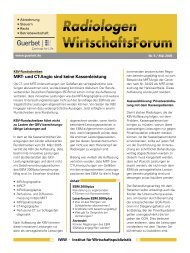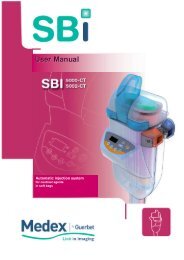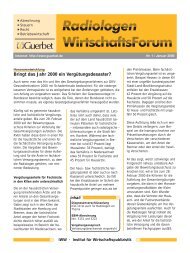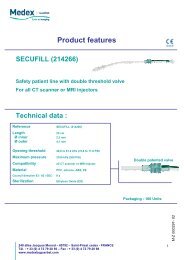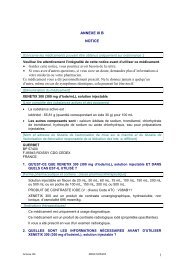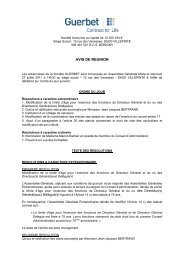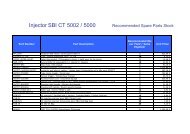Read the Registration Document - Guerbet
Read the Registration Document - Guerbet
Read the Registration Document - Guerbet
Create successful ePaper yourself
Turn your PDF publications into a flip-book with our unique Google optimized e-Paper software.
Held to maturity investmentsHeld-to-maturity-investments are financial assets <strong>the</strong> Group intends to and is able to hold to maturity. Theseassets are recorded at amortised cost on <strong>the</strong> basis of <strong>the</strong> effective interest rate method.They are subject to impairment testing when <strong>the</strong>re is an indication of impairment. When <strong>the</strong> carrying valueis greater than <strong>the</strong> estimated recoverable value, an impairment is recorded.Available-for-sale assetsAvailable-for-sale assets are a residual category for non-derivative financial assets that do not fall in any of<strong>the</strong> previous categories. Unrealised capital gains or losses are recorded under shareholders' equity until<strong>the</strong>ir disposal, with <strong>the</strong> exception of impairment recorded under income upon measurement.Currency gains and losses on <strong>the</strong>se assets are recognised under income for monetary assets andshareholders' equity for non-monetary assets.Fair value for listed securities corresponds to market price and for unlisted securities is determined on <strong>the</strong>basis of reference to recent transactions or reliable and objective indicators and third-party estimations andmarket data. However, when fair value cannot be reasonably estimated, it is maintained at cost. Theseassets are subject to impairment testing to determine <strong>the</strong>ir recoverable value.This category of investments concerns mainly non-consolidated participating interests and marketablesecurities that do not meet <strong>the</strong> o<strong>the</strong>r definitions for financial assets. They are classified under o<strong>the</strong>r assets(current and non-current) and cash and cash equivalents.l) InventoriesRaw materials and o<strong>the</strong>r supplies are recorded at <strong>the</strong> opening weighted average price. When <strong>the</strong> carryingvalue falls below this amount, a provision is recorded for <strong>the</strong> difference. Provisions are also made forinventories subject to low turnover rates.Production in progress and finished goods are recorded on <strong>the</strong> basis of production cost which includesdirect and indirect production costs and excludes headquarters, financial or selling expenses. A provisionfor impairment is recorded when <strong>the</strong>re is a risk that <strong>the</strong> products will not be sold before <strong>the</strong>ir expiration dateor below cost in light of selling costs that remain to be incurred.m) Trade receivables and related accountsAccounts receivable are recorded at face value. An impairment charge is recorded when a collection riskexists determined on a case-by-case basis, except under certain specific economic circumstances.The securitisation of receivables consists of <strong>the</strong> assignment of receivables to an entity that finances <strong>the</strong>acquisition of <strong>the</strong>se receivables by <strong>the</strong> issuance of securities on capital markets. When guarantees grantedto this entity do not suffice to consider that <strong>the</strong>re was a real transfer of risks to <strong>the</strong> assignee, <strong>the</strong>sereceivables continue to be recorded under assets with a debt recorded under liabilities for <strong>the</strong> amount offinancing granted by <strong>the</strong> entity.n) Non-current assets held for saleA non-current asset, or group of assets and liabilities, is classified as held for sale when its carrying amountwill be principally recovered through a sale transaction ra<strong>the</strong>r than through continuing use. For this to be <strong>the</strong>case, <strong>the</strong> sale must be highly probable. For <strong>the</strong> sale to be considered highly probable, <strong>the</strong>re must exist aplan to sell <strong>the</strong> asset (or "disposal group"), management must be committed to sell <strong>the</strong> asset and <strong>the</strong> assetmust be actively marketed.o) Cash and cash equivalentsCash includes cash on hand and bank balances. Cash equivalents include marketable securities, termdeposits which can be realised or sold within a very short period (less than three months) and do notpresent a significant risk of impairment in response to interest rate changes. These marketable securitiesare considered as financial instruments remeasured at fair value in income.79


